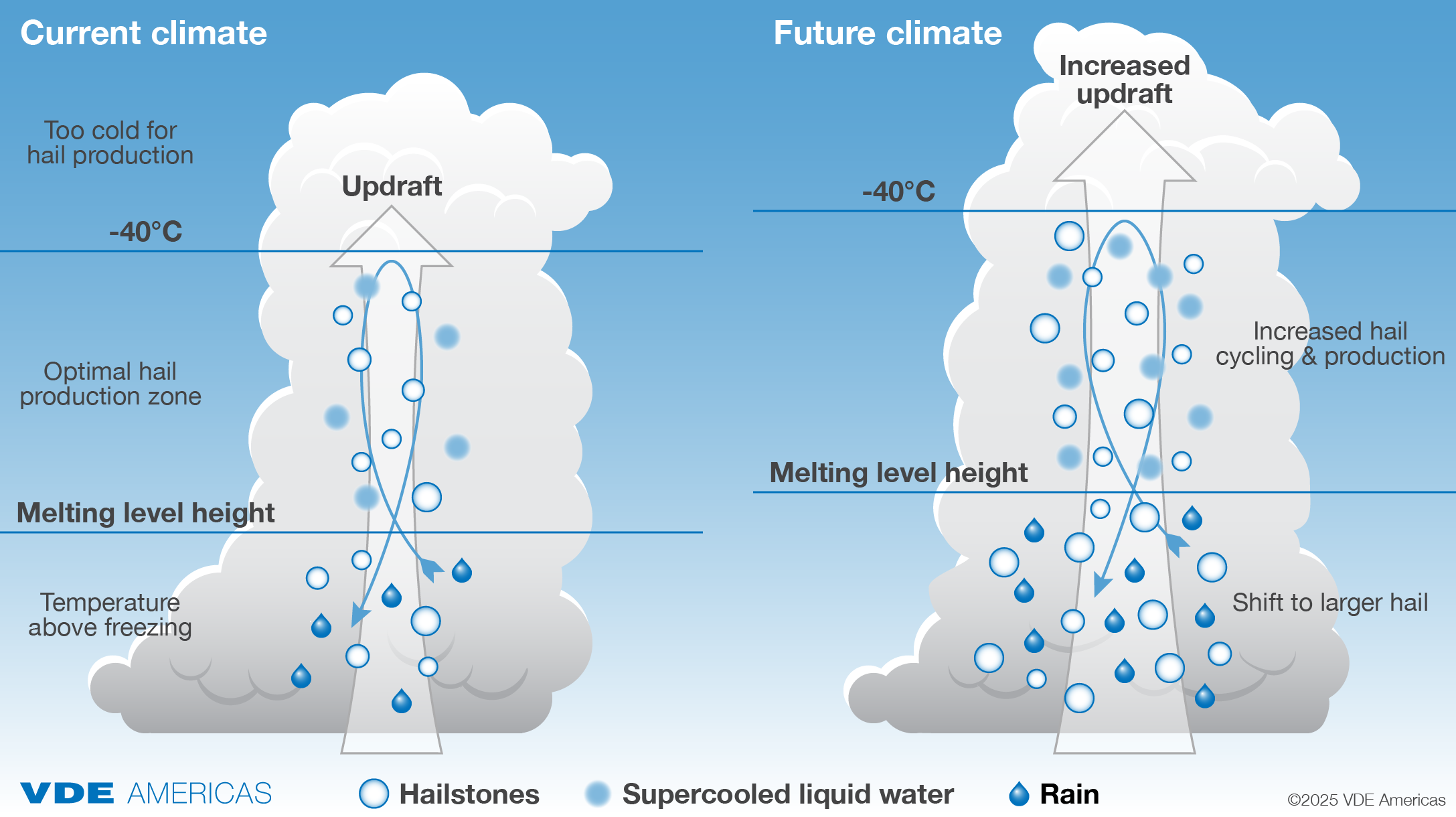
Massive hailstorms causing catastrophic damage across multiple sectors, from agriculture to automotive to energy infrastructure, highlight a critical challenge in our changing climate. Solar power plants provide a stark example—where individual storms can cause tens of millions in damage to installations, demonstrating the vulnerability of critical infrastructure to severe hail events. This damage is part of a broader trend that has led to significant hardening in the hail insurance market across all sectors, with higher premiums and more restrictive coverage becoming increasingly common.
While defensive solutions exist, such as protective canopies over car dealerships and hail monitoring and solar tracker stowing systems for solar power plants, knowing where to implement these defenses and how much damage to expect, both on average and in worst-case loss scenarios, requires sophisticated location-based risk assessment. Perhaps the most challenging aspect of this risk modeling is incorporating the effects of climate change over the coming years and decades. The changing climate is an important risk assessment factor, one that is altering both the frequency and intensity of hail events in complex ways.
How the climate can alter hail formation
Climate change is fundamentally altering the recipe for hailstorms, as shown in Figure 1. Think of the atmosphere as a complex kitchen where many ingredients and conditions must come together just right to create hail. The first crucial change is happening near the Earth’s surface, where warming temperatures allow air to hold more moisture, approximately 7% more for each degree Celsius of warming, following a principle known as Clausius-Clapeyron scaling. Since sufficient moisture content in the lower levels of the atmosphere is a crucial ingredient in severe thunderstorm development, this change would help generate more time during the year with the energy needed to produce hailstorms and has been linked specifically with increased hail frequency.



